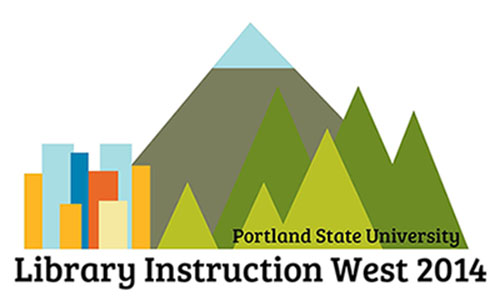Start Date
7-24-2014 3:15 AM
End Date
7-24-2014 3:35 AM
Subjects
Information literacy -- Study and teaching (Higher), Cognitive learning, Library users -- Effect of technological innovations on, Information services -- User education, Competency-based education -- Curricula
Description
Purpose: This paper demonstrates how a librarian at a liberal arts college partnered with a professor of rhetoric and media studies to teach methods students to classify sources using Bizup’s BEAM.
Design/ Methodology Approach: Students in rhetorical criticism, read the Bizup article on BEAM. The library instruction included a discussion of the article and an application exercise where students classified cited references in a peer reviewed journal article using BEAM.
Findings: BEAM was a valuable addition to the rhetorical criticism course. The application exercise used in the library instruction session introduced BEAM as a tool to use in reading and evaluating sources. Students were able to apply what they learned as they selected, deciphered and interpreted sources of information for use in their academic writing.
Practical implications: Librarians teaching in a variety of academic disciplines may use or adapt BEAM as a tool for helping students learn to critically evaluate information sources as they read texts and as they engage in research-based writing assignments.
Originality/Value: This work showcases how librarians using BEAM can extend library teaching beyond traditional bibliographic instruction and into the realm of critical inquiry. It also demonstrates how librarians can use BEAM to initiate conversations with academic faculty about information literacy. And it contributes to an emerging area of scholarship involving the use of BEAM to teach source evaluation.
The presentation associated with this article can be accessed at http://archives.pdx.edu/ds/psu/14477.
Persistent Identifier
http://archives.pdx.edu/ds/psu/14506
Included in
Flashlight: Using Bizup’s BEAM to Illuminate the Rhetoric of Research
Purpose: This paper demonstrates how a librarian at a liberal arts college partnered with a professor of rhetoric and media studies to teach methods students to classify sources using Bizup’s BEAM.
Design/ Methodology Approach: Students in rhetorical criticism, read the Bizup article on BEAM. The library instruction included a discussion of the article and an application exercise where students classified cited references in a peer reviewed journal article using BEAM.
Findings: BEAM was a valuable addition to the rhetorical criticism course. The application exercise used in the library instruction session introduced BEAM as a tool to use in reading and evaluating sources. Students were able to apply what they learned as they selected, deciphered and interpreted sources of information for use in their academic writing.
Practical implications: Librarians teaching in a variety of academic disciplines may use or adapt BEAM as a tool for helping students learn to critically evaluate information sources as they read texts and as they engage in research-based writing assignments.
Originality/Value: This work showcases how librarians using BEAM can extend library teaching beyond traditional bibliographic instruction and into the realm of critical inquiry. It also demonstrates how librarians can use BEAM to initiate conversations with academic faculty about information literacy. And it contributes to an emerging area of scholarship involving the use of BEAM to teach source evaluation.
The presentation associated with this article can be accessed at http://archives.pdx.edu/ds/psu/14477.



Notes
This is the authors' accepted version of an article that was subsequently published in Reference Services Review, Volume 43 Issue 1 by Emerald Group Publishing. The version of record may be found at http://dx.doi.org/10.1108/RSR-10-2014-0047
This article is (c) Emerald Group Publishing and permission has been granted for this version to appear here (http://pdxscholar.library.pdx.edu/). Emerald does not grant permission for this article to be further copied/distributed or hosted elsewhere without the express permission from Emerald Group Publishing Limited.